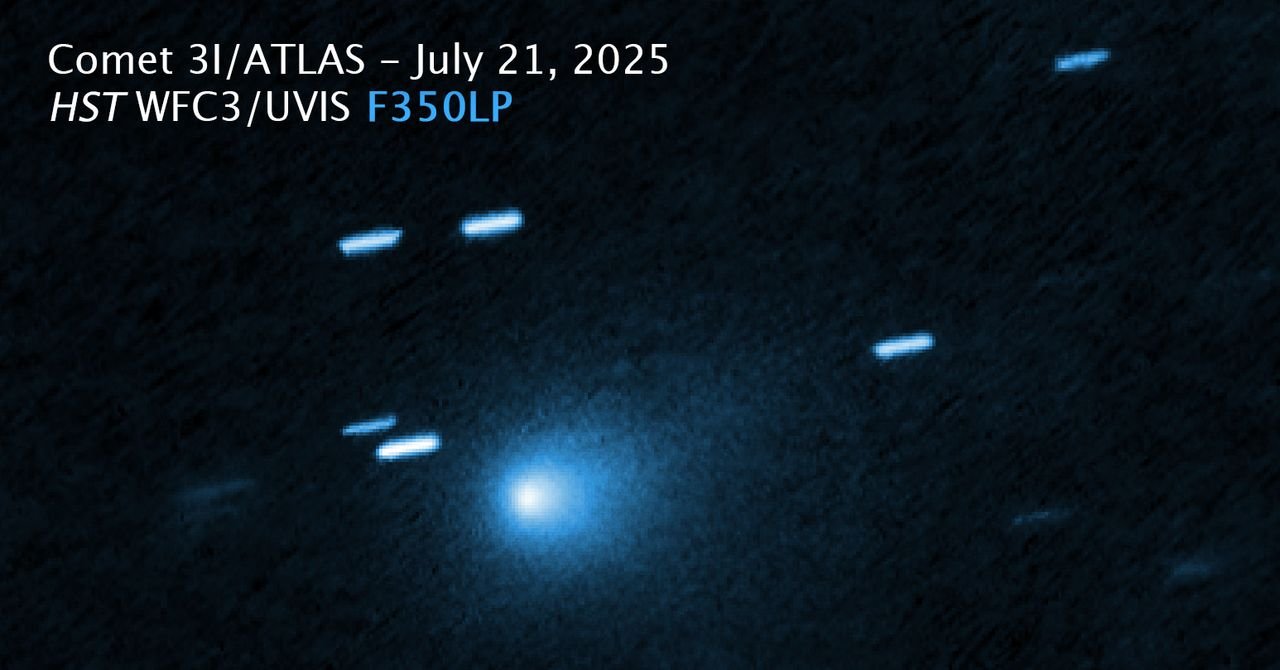there is more evidence Evidence emerged to support the natural origin of comet 3I/Atlas. After weeks of conspiracy theories, debate on social media, and speculation on popular podcasts like Joe Rogan, this interstellar object is still a comet. The most recent confirmation comes from an observatory in South Africa that detected the first radio signal from 3I/ATLAS.
But how? A radio signal? This would confirm that the item is technical in nature, right? The thing is, it’s not a radio signal like a broadcast emitted by a spacecraft. Instead it is a radio frequency pattern detected by MeerKAT, a radio telescope made up of 64 antennas – each 13.5 meters in diameter – operated by the South African Radio Astronomy Observatory. And what did it discover? According to the researchers, “OH absorption was detected at the 1665 MHz and 1667 MHz lines.”
What MeerKAT specifically detected were lines of radio absorption by hydroxyl radicals, i.e. OH molecules, a pattern that would be consistent with typical comet activity. The lines appear as absorption because 3I/Atlas was very close to the Sun and the observation geometry favors absorption over emission. This is the phenomenon that was explained in WIRED a few days ago when the controversy about non-gravitational acceleration arose: When comets reach their closest point to the Sun, they deposit ice into space and receive greater amounts of radiation. This also gives them reason to change their trajectory.
The hydroxyl radical (OH) can absorb or emit radiation at specific frequencies (such as the 1665 and 1667 MHz lines) due to transitions in its energy levels. These OH spectral lines have been found in nebulae, comets, and star-forming regions. OH helps astronomers map star- and water-borne regions of the universe because it can “shine” brightly at radio frequencies under certain conditions.
Is there still hope that it’s more than a comet?
The detection occurred on October 24, five days before 3I/Atlas reached its closest point to the Sun. MeerKAT had previously attempted to detect the radio signal on 20 and 28 September, although this was unsuccessful. “Five weeks ago, I encouraged radio observatories like MeerKAT to search for radio emissions from 3I/ATLAS, noting that the arrival direction of 3I/ATLAS coincides to within 9 degrees with the arrival direction of the Wow! signal detected in 1977 at a frequency of 1.4204556 gigahertz,” astrophysicist Avi Loeb wrote in a Medium post. “In response, I was assured that 3I/ATLAS would be monitored by radio observatories such as MeerKAT.”
Loeb acknowledged that “other than the OH absorption signal, no radio detections of 3I/ATLAS have been reported so far.” Of course, reaching more concrete conclusions about its nature will require continued monitoring of the object to determine factors such as the extent and composition of the tail, as well as whether OH production is constant or intermittent.
Loeb has been among the most vocal proponents of the hypothesis that 3i/Atlas has technological origins. (And he’s already invited Kim Kardashian to join his research team.) MeerKAT’s findings haven’t diminished his drive to investigate the comet’s nature. “On March 16, 2026, 3I/ATLAS is expected to pass within 53 million kilometers of Jupiter. At that time, the Juno spacecraft will use its dipole antenna to search for radio signals from 3I/ATLAS at low frequencies ranging from 50 Hz to 40 MHz.”
Will the detection of Meerkat be enough to end conspiracy theories about 3I/ATLAS? Probably not, and at least the debates have increased the general public’s awareness of and interest in astrophysics. In the meantime, you can see the trajectory of Comet 3I/ATLAS here. And do not forget to mark December 19 on the calendar – only then will the interstellar guest reach its closest point to Earth.
This story appeared for the first time wired en español And it has been translated from Spanish.
